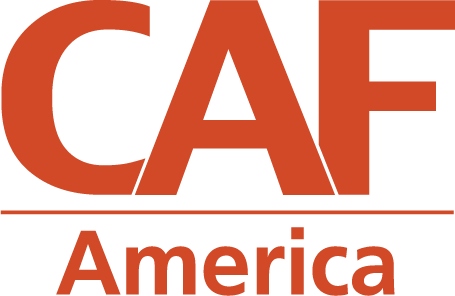As the 2030 Framework reaches its midpoint in 2023, the value of philanthropic capital in sustainable development is more important than ever before. At the same time, focus on charitable giving has disappeared from consideration. Tapping into philanthropy as a strategic resource is critical if the world is to achieve our sustainable development targets by 2030.
This month’s High Level Political Forum on Sustainable Development is the main event of the International Sustainable Development community. For 9 days over 3 weeks, delegations to the UN, civil society groups, and a bevy of other Major Groups and development thought leaders descended on New York City to discuss the world’s progress towards the 2030 Agenda for Sustainable Development. But, crucially, the program keeps philanthropy on the periphery, ignoring an important partner for achieving the Sustainable Development Goals.
If you need a hint as to how the 2030 Agenda currently stands, here is a rough synopsis: It’s Not Great, Folks. The UN itself shares that the COVID-19 pandemic led to millions of people around the world slipping back into poverty. The following economic uncertainty – including a widespread cost-of-living crisis and ill-timed food shortage – has led to a general low-grade panic about how we can hope to achieve the Sustainable Development Goals by 2030 (which is only 8 ½ years away). And of course, delegates to this month’s Forum looked ahead to 2023, when they will be marking the halfway point of the 2030 Agenda and are no doubt grasping for more to show for it.
At the heart of the problem for the architects of the SDGs is a lack of Funding for the Goals. In 2019, the UN estimated that the “financing gap,” or the difference between what was needed to achieve the SDGs and the actual amount dedicated, stood at $2.5 trillion per year. This estimate was before the COVID-19 pandemic, which swallowed up huge chunks of funding that could otherwise have been applied to advancing the Sustainable Development Agenda.
Thankfully, the UN has a dedicated team working hard to close this gap, in the form of the UN Economic and Social Council-led “Inter-agency Task Force on Financing for Development,” which hosts an annual Forum to debate and discuss all things SDG-finance (last held in April 2022). The Task Force has its roots in a document called the Addis Ababa Action Agenda, which was published in 2015 in the lead-up to the Sustainable Development Summit at which the SDGs were adopted. This Agenda specifically defines how the UN-world engages with funding for all things Sustainable Development. And since the UN is an organization made up of states, the lion’s share of financing for development (FfD) was expected to come from member states themselves.
This may sound like a great plan, but not if you consider how this model is supposed to work: Under the Addis Ababa Action Agenda and its successor frameworks, progress for sustainable development relies on “strong nationally owned sustainable development strategies supported by integrated national financing networks.”1 In other words, they will do it themselves, with their own funding.
Unsurprisingly, poor countries are already focused on economic growth and lack additional resources to support more than incremental new progress. Rich countries typically step in to augment local budgets in the form of funding for agencies that provide Official Development Assistance (ODA) such as USAID (United States), DfID (United Kingdom), and GiZ (Germany). To provide an idea of what this looks like, in 2021 all members of the OECD’s Development Assistance Committee budgeted only US$178.9 billion for ODA – less than 10% of the value of the 2019 annual financing gap.
Beyond national spending and ODA, the Inter-agency Task Force has focused on ways to open up private sector financing for business in developing countries. But as the financing conversation trends towards policies and practices, it ignores a substantial source of funding that is quietly driving sustainable development at the subnational level. Philanthropy and philanthropic giving, while given a passing mention in the Addis Agenda, have disappeared from UN discourse about how to achieve the SDGs – even as philanthropists around the world have proven instrumental in responding to the effects the COVID-19 pandemic has had on the global charity sector. Indeed, the outcome document of the 2022 Inter-agency Task Force contains no mention of philanthropy or charitable giving.
The UN development community ignores philanthropy at their peril: US philanthropists gave over $465 billion to charity in 2021, an amount almost 2.5 times as large as total ODA commitments. Think about how that could be used within the UN context:
- Philanthropists are more agile than governments and traditional INGOs, able to respond to disasters when rapid funding is needed. CAF America alone has facilitated over $150 million in disaster and crisis-related grants since 2020 alone, and emergency response is an increasingly-critical part of any holistic grantmaking program.
- Philanthropy has the potential to match or outstrip ODA as a vehicle for transferring capital to countries in the Global South, adding to the resources available to global civil society as they work towards the Goals.
- Philanthropists can experiment with development interventions, allowing civil society to take risks on new and innovative programs and try out different interventions without the need for rigorous governmental oversight and accountability or the need to pay back investments.
If the UN wants to get serious about achieving the SDGs by 2030, they need to bring private-sector donors to the table and give them a mechanism to participate in the 2030 Agenda in a meaningful way.
1 https://sustainabledevelopment.un.org/content/documents/2051AAAA_Outcome.pdf Section 9


